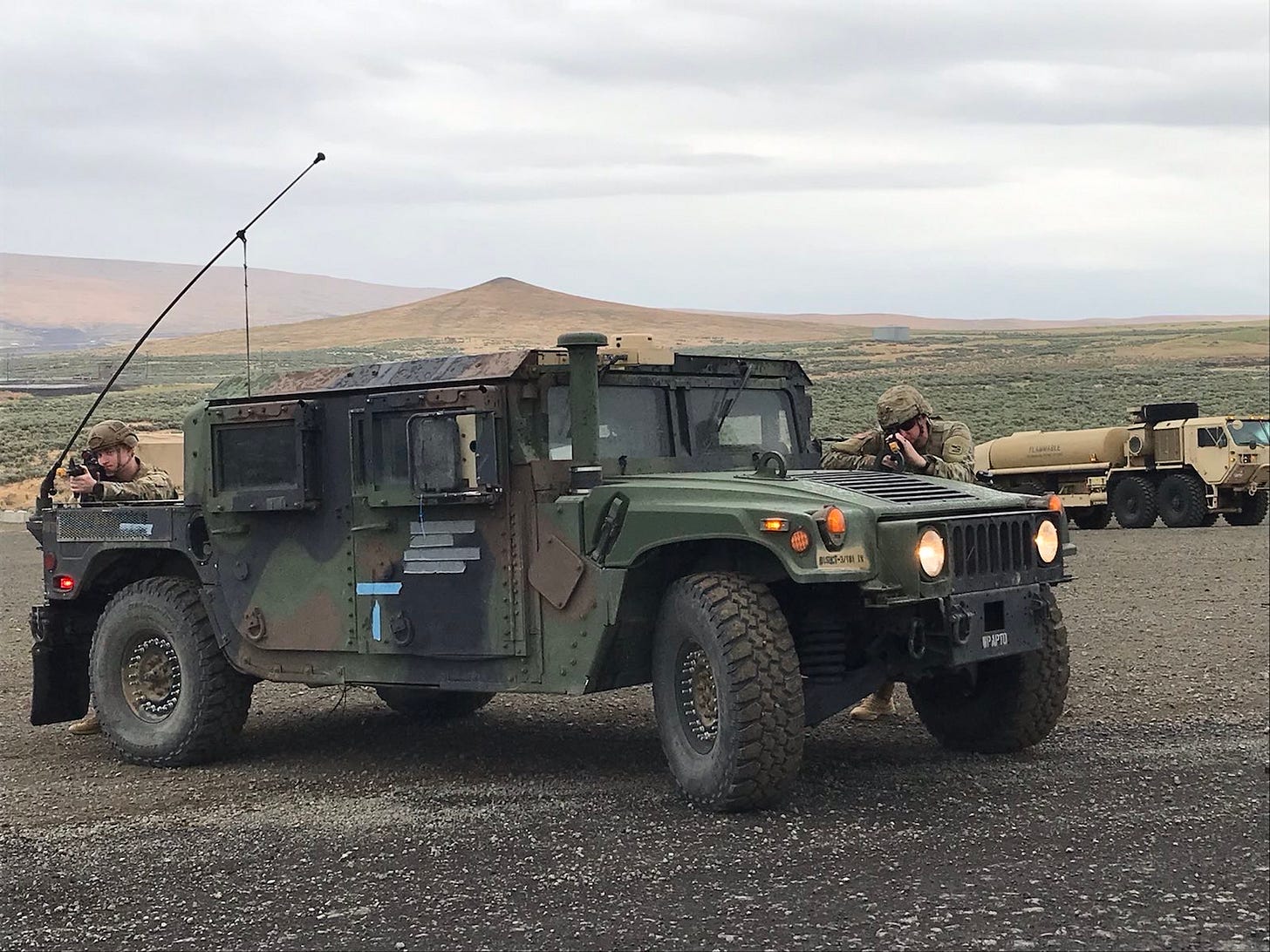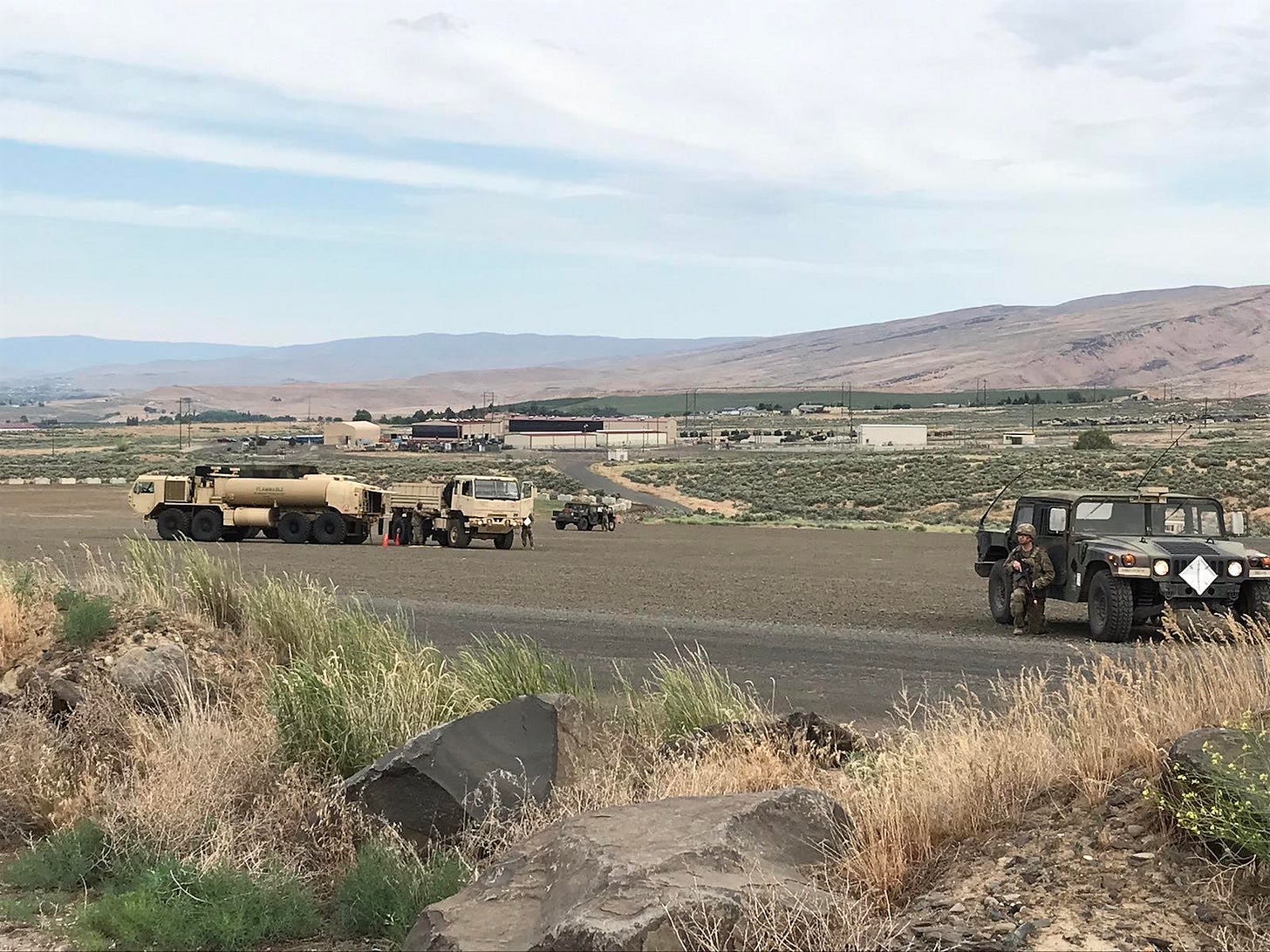Tactical Sustainment: Mitigating A Critical Vulnerability
Do the difficult things while they are easy and do the great things while they are small. A journey of a thousand miles must begin with a single step.
- Lao Tzu
Nothing is easy in our profession. We need to be experts on technical skills from weapons to trucks; we need to be able to operate and win as units from teams to companies, and then add increasing levels of enablers from battalion and up. The requirements vastly exceed our available training time, causing us to look for expedients and cut corners – it’s natural. In general, expedients are good since they claw back time so we can focus on the most important things. But they can have unintended consequences that we need to check to reset the course. In my experiences in the Washington Army National Guard, we default to admin sustainment and when we switch to tactical sustainment, we act like it’s a big deal and really disruptive.
When I was a platoon leader through company commander, I was always on the hunt for ways to get more productive time for training my formation. Time for ranges, time for tactics, time for driver training, time for professional development of my Soldiers. The more efficiently we could do things like fueling, filling the water buffalo, receiving ammo, getting medical treatment done, receiving higher level maintenance support, the better. Fundamentally I understood that the expedients weren’t properly exercising our sustainment functions, but the trade-off was worth it at the time. It was worth it because I didn’t put in any thought into sustainment being a critical vulnerability. I was perpetuating bad habits without even being aware of it because that’s how we always operated. But as I’ve served more and thought about how to merge tactical sustainment with training, I’ve realized we can create new expedients to reduce that vulnerability while training everyone on what sustainment should look like, and still enabling the supported unit to train.
An Expedient for Tactical Sustainment
Imagine that you are going to the field for drill, say Yakima Training Center (YTC) or Joint Base Lewis-McChord (JBLM). Frequently, we have a fueler waiting some distance from the motor pool to top-off. Our MREs are probably pre-drawn, someone takes the water buffalo to a water point and fills it, and then ammo arrives at the range. Nothing about that sustainment is tactical. How hard would it be to replace that fueler with a logistics release point (LRP) that has a fueler, a water truck, MREs, and ammo – like a one stop shop? Now let’s take it a few steps further – put the LRP in a covered and concealed location, provide security for it, use far recognition with some form of communication, have an alternate location with criteria for what would cause a jump to the alternate, and rehearse it.
If you’re a pessimist it is super hard, is going completely throw-off the timeline for important things like ranges, situational training exercises (STX), and anything else you have planned. If you’re a pessimist, its probably better that this idea dies…. right now. If you’re an optimist, you’ll realize that this isn’t that hard. It’s just combining separate events into one, while providing your subordinate leaders the opportunity to plan, coordinate, and delegate tasks. Tasks like maintain security while rotating vehicles for fuel, how to draw and then distribute ammo and MREs quickly but accurately, etc. If you’re an optimist you see the opportunity to harden our sustainment force structure, to enforce good practices, operationalize tasks that we don’t do in an admin setting in the National Training Center (NTC), and provide an opportunity for leaders to lead.
What I’ve described above and illustrate below is just one possible solution. The intent is to spur more conversations, thinking through issues, solving problems through experimentation, and get people on board with hardening our sustainment and reducing a friendly critical vulnerability.
What do we do when we encounter friction?
Carl von Clausewitz famously wrote that friction is “the concept that differentiates actual war from war on paper.” It’s things like the lead vehicle taking the wrong route and bypassing the LRP that is hidden in a covered and concealed location, or forgetting that the generator requires different fuel from trucks, or not being able to raise the LRP on comms because of gremlins or solar flares or because you’re rusty at commo. The thing about friction is that it can usually be mitigated by things like pre-combat checks and inspections (PCCs/PCIs), rehearsals, contingency plans, and on the spot leadership decisions.
Yes, by choosing to deliberately make our sustainment harder to kill via practicing good habits, we will add complexity and hence increase chances for friction. But friction will happen at NTC, and there will be a whole lot more at NTC if we haven’t habitualized ourselves to good practices. And you know what’s even worse than friction, culminating an operation because our fuelers are all dead because they didn’t practice good habits when they had the chance.
What about medical, maintenance, and hot chow?
For medical treatment, how about taking injured troops to the aid station instead of the hospital (unless it’s an emergency). If the aid station can’t fix them, let them evac the Soldier to the hospital, or whatever they deem appropriate (fully disclosure, I stole this idea from a smarter friend). We don’t distribute class 8 medical supplies all that frequently, but we sure can via a LRP or whatever distribution method you are using. For maintenance, the Unit Maintenance Collection Point (UMCP) is a mechanism that the Army has created for us – it can (and should) have a comms up for far recognition, get rehearsed, and similar. Hot chow – easy, setup another LRP (with security, in a covered and concealed location…) and you can distribute that way.
Conclusion
I haven’t addressed all aspects of sustainment, like personnel services (S1), legal services, or religious services. I’ve mostly focused on commodities with a light mention of medical services. Not everything will work super great in a tactical setting, like seeing JAG for help updating a power of attorney. But my point is that we have defaulted to a system of expedients that make our sustainment overwhelmingly admin. But with recognition of the problem, a will to solve for yes, and creativity, we can change our culture.
The LRP is not the only way, and my table with platinum, gold, and silver levels for C2/rehearsals, security, and training variables is just one possible framework. Honestly, you should have multiple solutions; like different plays you can use for the right situation. On that note, the LRP is just the technique for employing supply point distribution, one of three distribution methods recognized in ATP 4-90, Brigade Support Battalion (page 6-2, June 2019). The other two methods are unit distribution and throughput. Build a play for each one.
I’m pushing that we reverse the roles and make tactical sustainment the default and admin sustainment something we do when we must. We all like expedients because they claw back time and focus, and we can create our own expedients to enable tactical logistics while still maintaining our time and focus on the main things. Making this switch won’t get easier in time, it will get harder as the requirements for XCTC and NTC approach. Let’s do the difficult things while they are easy, make our sustainment hard to kill, and reduce our critical vulnerability.
-MAJ Tom Haydock, Student at School of Advanced Military Studies
Book of the Week
No other single person impacted the way we fight and what we fight with than John Boyd. Reading his biography provides a template on how to think differently, more effectively, and how to be dedicated to the cause of freedom.
From the back:
“Boyd, more than any other person, saved fighter aviation from the predations of the Strategic Air Command. His manual of fighter tactics changed the way every air force in the world flies and fights. He discovered a physical theory that forever altered the way fighter planes were designed. Later in life, he developed a theory of military strategy that has been adopted throughout the world and even applied to business models for maximizing efficiency. And in one of the most startling and unknown stories of modern military history, the Air Force fighter pilot taught the U.S. Marine Corps how to fight war on the ground. His ideas led to America's swift and decisive victory in the Gulf War and foretold the terrorist attacks of September 11, 2001.”
Get the book HERE
In Your Ears
The Hiring Board
These are the jobs that are currently open in Washington. Don’t let the opportunity pass you by! Visit this website for the most current openings.
Would You Like to Contribute?
Submit your article and pictures HERE













